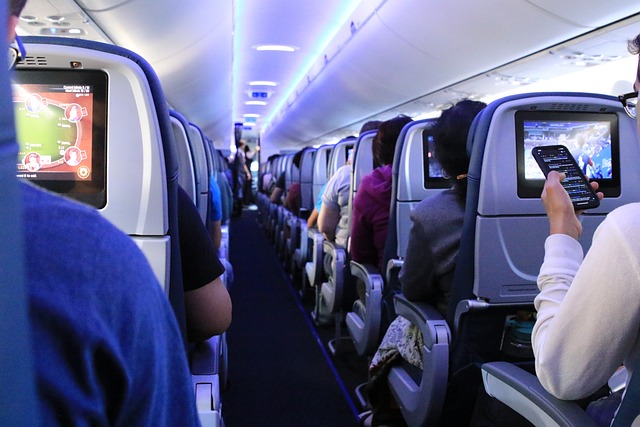This is the other name for claustrophobia.
Fear of confined spaces often relates to fears around travelling in vehicles, whether cars or public transport such as buses, trains, and especially airplanes.
People feel especially “trapped” or confined if they’re stuck in a traffic jam.
They’re not actually locked in.
But they feel they cannot jump out because this would leave their car blocking the road.
Likewise in a bus or train, you cannot make it stop except by pulling the emergency alarm.
Some forms of transport may be impossible to use if you have a fear of confined spaces.
In an underground train you cannot get out at all unless the train is at a station, and trains do sometimes stop unexpectedly between stations.
And in an aircraft of course you cannot possibly get out until the plane has landed!
Few people get claustrophobia on a ship, probably because you can always go up on deck.
Lifts in tall buildings are another problem- even some hospitals nowadays are tower blocks, such as Guys Tower at Guys Hospital in London, which is thirty stories high.

MRI scans are another problem for people with claustrophobia, because this involves lying in a tube, possibly with a frame placed over your head.
MRI scanner staff are well aware of claustrophobia and know how to help patients to tolerate the procedure, however hypnotherapy may still make this easier.
Some hospitals have made videos about MRI procedures, like this one, to reassure patients.
Some people who suffer from claustrophobia even worry about being locked up in a police cell even though they’re very law-abiding citizens.
Their mind races ahead of reality, creating fantasy scenarios.
How fear of confined spaces arises
Fear of confined spaces often begins with a frightening experience in childhood.
For instance, other children may have mischievously shut the person in a cupboard or a phone box.
Other cases may go back to the client’s birth.
If labour was prolonged and difficult they could feel suffocated on the way out.
What does it cost?
Therapy sessions are £60 per session, which is about the average going rate in this area.
Number of sessions varies from person to person, as no two people are the same.
However in my experience it’s normally between three and eight sessions.
We will be aiming for a permanent change in this time.
This is not like seeing a hairdresser where you keep on going back on a regular basis.
Once you get over a phobia there is normally no reason why you would get it back.
If this fear is inconveniencing you, you can make a start on overcoming it by calling me on 01392574669 or use the contact form below.
Remember to tick the “consent” box or the form won’t send.
I see clients all my clients in Exeter.
Fear of Confined Spaces and the Fight or Flight response.
Most of us don’t actually like being in confined spaces.
However we can tolerate a confined space for a few hours if for instance we need to get somewhere in an airplane.
Problems arise when we actually fear the confined space enough to trigger a fight-or-flight reaction.
I’ve explained the fight-flight reaction in more detail HERE.
Unfortunately, in a confined space this Fight-or-flight reaction is of no help to us.
For instance, if we’re in an underground train which has stopped in a tunnel, what we actually need to do is just to wait until the signals change and the train driver can move off again.
We just need to calm our brains and bodies rather than preparing them for strenuous activity.
To be effective, hypnosis therapy for claustrophobia should include a range of techniques to address all these components of the phobia.
CLICK HERE for more detailed information on what happens in a therapy session.
 Skip to the content
Skip to the content
